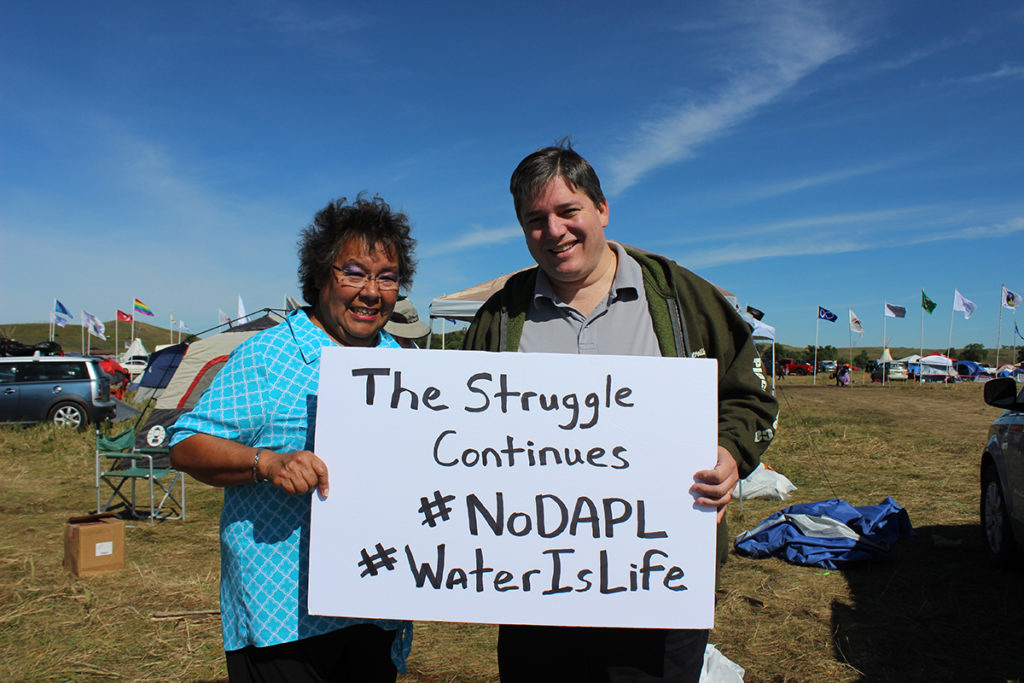Where Things Stand with the Dakota Access Pipeline
 The construction of the Dakota Access Pipeline (DAPL) and the ensuing protests from Indian Tribes and their allies garnered the international spotlight last year. The Standing Rock Sioux Tribe, whose homelands abuts the Missouri River, emerged as the leading voice as thousands of indigenous people from across the United States, Canada, and the world joined them in protest of pipeline that became known as “the black snake.” DAPL is a $3.8 billion 1,168 mile-long pipeline that will carry up to 500,000 barrels of fine crude oil per day from the Bakken Oil Fields in North Dakota to a river port in Illinois. The pipeline crosses the Missouri River, the primary source of drinking water for the Standing Rock Sioux Tribe and the region. The pipeline had already been rerouted away from Bismarck, North Dakota, a mostly non-Indian population.
The construction of the Dakota Access Pipeline (DAPL) and the ensuing protests from Indian Tribes and their allies garnered the international spotlight last year. The Standing Rock Sioux Tribe, whose homelands abuts the Missouri River, emerged as the leading voice as thousands of indigenous people from across the United States, Canada, and the world joined them in protest of pipeline that became known as “the black snake.” DAPL is a $3.8 billion 1,168 mile-long pipeline that will carry up to 500,000 barrels of fine crude oil per day from the Bakken Oil Fields in North Dakota to a river port in Illinois. The pipeline crosses the Missouri River, the primary source of drinking water for the Standing Rock Sioux Tribe and the region. The pipeline had already been rerouted away from Bismarck, North Dakota, a mostly non-Indian population.
Litigation Background
Through treaties, Supreme Court decisions and federal statutes, the United States must uphold federal trust and treaty obligations towards American Indians, Alaska Natives, and Native Hawaiians. The Standing Rock Sioux Tribe sued the federal government for breaching its trust responsibility to protect their water and archeological resources, sacred sites, and burial areas and failing to consult with them on the approval of DAPL.
Where Things Stand Now
Unfortunately, on February 8, 2017, the Army Corps of Engineers approved the pipeline by permitting the final easement across the Missouri River. The tribe exhausted its remedies through the federal court system and the oil company prevailed. Oil started flowing through parts of the pipeline on March 27th but the pipeline is not slated become fully operational until June 1st. In early March, more than 100 gallons were leaked in two separate instances from the pipeline and a line feeding into it as work crews prepared for operations. On April 4th, there was another spill of 84-gallons from the pipeline in South Dakota.
What Can Be Done
The Standing Rock Sioux Tribe and environmental groups continue to press financial institutions, cities, and individuals to divest from their investments in the Dakota Access Pipeline and other pipeline projects. If you would like more information on this, see “7 Ways to Make an Even Bigger Impact When you Divest from DAPL” and “Norwegian Pension Fund Divests from Companies Behind DAPL.”
Related News
The UCC’s 2026 Climate Hope Art Contest
Last year's winning artwork register your church For the fourth straight year, the...
Read MoreGrowing Weary
In December 1964 during a speech in Harlem, Fannie Lou Hamer declared: “And you can always...
Read MoreOur Moral Center
“We've got about 350,000 people who are dying prematurely from the burning of fossil fuels...
Read More


